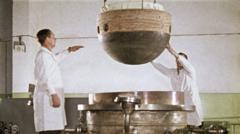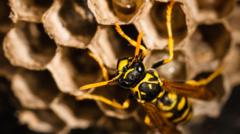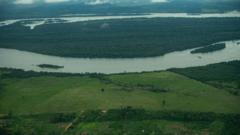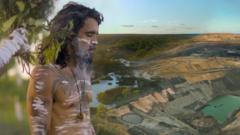In a noteworthy development, the European Space Agency (ESA) has indicated that a fragment from the Soviet-era spacecraft Kosmos 482 has likely re-entered Earth's atmosphere after spending more than 50 years in orbit. Launched in 1972 as part of a mission aimed at Venus exploration, the spacecraft never achieved its target and instead disintegrated into four separate pieces that have been circling the Earth since then.
As reported by the EU Space Surveillance and Tracking centre (SST), one of these fragments, thought to be the lander, is estimated to have re-entered the atmosphere at around 06:16 GMT on Saturday. However, it's still uncertain whether the piece landed on Earth or burned up during the re-entry process. Experts have also noted ambiguity around the exact location of this atmospheric re-entry.
Given that 70% of Earth's surface is water, analysts believe that the likelihood of the fragment causing any considerable damage is minimal. "It's statistically more probable to win the lottery than to be hit by this piece of debris," remarked Stijn Lemmens, a senior ESA analyst.
The structure of the Kosmos 482 lander capsule was specifically designed to endure the harsh conditions of Venus’s atmosphere, which included a sturdy heat shield. This feature has led experts to speculate that the capsule may have survived the chaotic descent through Earth's atmosphere. However, due to its extensive time in space, the parachute system—originally intended to slow its descent towards Venus—might have deteriorated significantly.
Lemmens explained that the re-entry of man-made objects into Earth's atmosphere is a common occurrence, often happening weekly for larger spacecraft and daily for smaller ones. Most of these objects generally disintegrate before reaching the ground, similar to the incidents involving China's Long March 5B booster in 2022 and the Tiangong-1 space station in 2018, both of which mostly burned up in the ocean.
International space agencies are currently monitoring Kosmos 482 closely. Looking ahead, Lemmens emphasized the importance of designing future spacecraft with capabilities to perform controlled re-entries. This proactive approach could enhance the accuracy of landing predictions, thereby minimizing the odds of debris affecting populated areas and better managing the environmental impact of space debris through safe disposal methods.





















